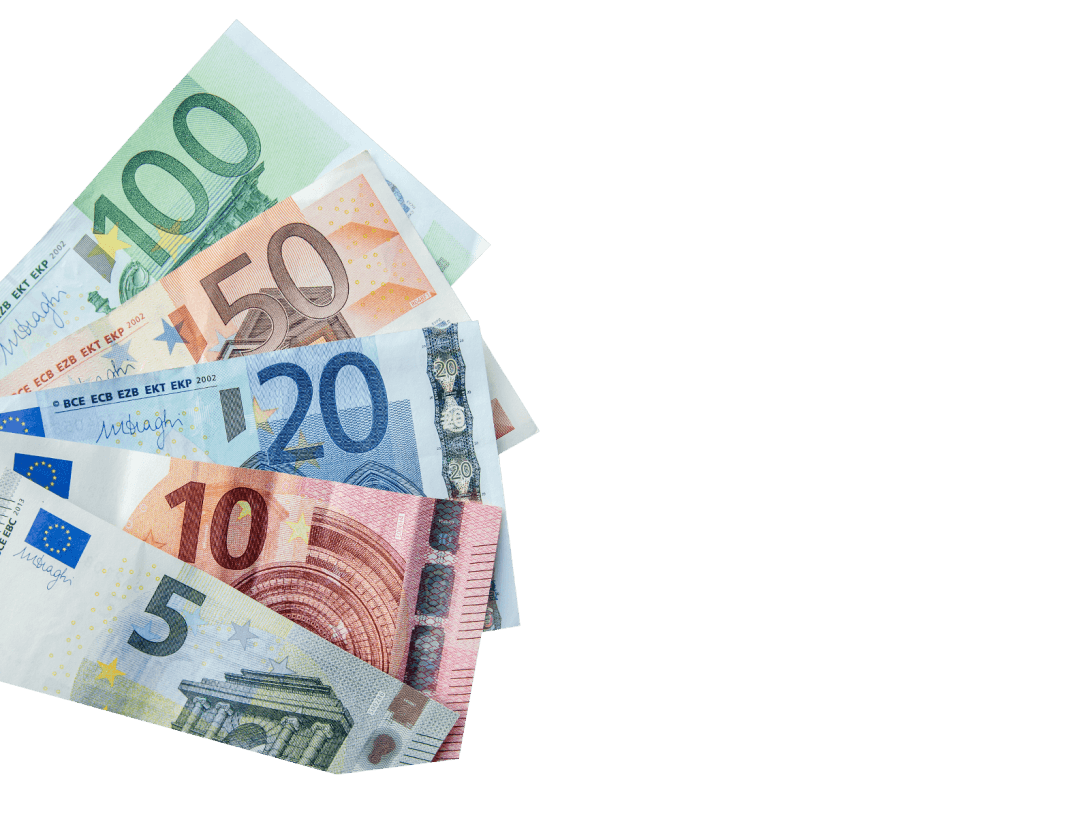There are three reasons for producing new banknotes: the note is badly damaged and has been removed from circulation, there is increased seasonal demand for cash or an unexpectedly high need for cash. The European Central Bank (ECB) creates a central forecast of the number of banknotes needed for each year and assigns a production volume to the national central banks – in Germany, that’s the Deutsche Bundesbank. Euro banknotes are produced throughout Europe in eleven high-security printing works. The Bundesbank is the only institution in Germany that can issue banknotes, and as such they are responsible for deciding who can print them.
What are the banknotes made of?
The life cycle of a euro banknote begins with the production of the sheets themselves. The sheets are made of pure cotton, which makes them easy to grip. They are produced in Germany in locations such as the Louisenthal paper factory. Cotton has been used to print banknotes for centuries, because it is cheap, long lasting and well-suited to automatic processing. Security measures to guard against counterfeit notes are implemented starting during production of the sheets themselves. Some of the security measures added during this step include the watermark, security thread, hologram and machine-readable features that allow ATMs to ascertain that the banknote is not a counterfeit.
Euro banknotes are not just printed in state-owned facilities, they are also produced by specialised private printers. In Germany, banknotes are produced by the Bundesdruckerei (Federal Press), with headquarters in Berlin, as well as the private company Giesecke & Devrient, which produces banknotes in Leipzig. The notes are printed, numbered and cut as part of a several-step process.
The methods used when manufacturing banknotes are offset printing, silk-screen printing and intaglio printing. The hologram is hot stamped onto the banknote during the printing process. The colour-changing numbers are printed using the silk-screen method, while intaglio printing produces the raised print elements. The central image, the writing and the large value numerals on the front and the side of the banknotes are raised slightly, so you can feel them with your fingertips.
After being printed, the completed euro banknotes are delivered to the Bundesbank, which then issues them to the commercial banks via its 35 branches. The banks then pass the notes on to businesses and consumers. Businesses and consumers deposit any extra cash they have back with the banks. The banks keep some of this cash to refill their cash assets and to ensure they can provide cash when a customer wants to withdraw it. The rest is returned to the Bundesbank to be checked. Counterfeit or damaged notes are removed from circulation.
An interesting fact: higher value banknotes last longer. One reason for this is that smaller notes, up to €50, are passed around much more often and remain in use in retail stores, where they can be given as change, for longer. Banknotes issued as part of the first series are in circulation for an average of one to four years. On the other hand, first series banknotes starting at a value of €100 can last for over 10 years. The second series of banknotes, known as the Europa series, attempts to increase the durability of banknotes by means of a coat of varnish.
Read all about how to recognise and protect yourself from counterfeit money here.
What happens to damaged banknotes?
It takes more than just a few spots of dirt for a note to be taken out of circulation. In fact, there is a list of criteria that describes exactly when a euro banknote needs to be replaced. Fully automatic banknote handling machines remove banknotes from circulation because they no longer meet fitness check criteria. These notes are then replaced by new banknotes.
Anyone who finds themselves unable to pay for goods with a damaged euro bank note can turn to the Bundesbank, who will replace badly damaged euro notes free of charge. However, the person with the damaged note will have to present more than half of the banknote in question or prove that the larger, missing portion has been destroyed.
Euro notes that are removed from circulation due to damage are shredded in such a way that they cannot be reconstructed and then disposed of. A very few tiny pieces of these bank notes, however, are saved for the Bundesbank’s Money Museum, and can be purchased there as gifts or souvenirs.
Notes from other countries
Of course, pure cotton paper is not always used to create bank notes. Some countries use plastics (polymers) to print bank notes. All bank notes issued in Switzerland after 2016 use a three-layer banknote substrate. Two layers of cotton paper surround a polymer core, which lends the note strength. 10- and 20-Rand notes from South Africa, issued to celebrate Nelson Mandela’s 100th birthday, are made of a cotton substrate covered in a polymer film on both sides.
The advantage of this type of composite material is that the banknotes are more durable, which is particularly important if the country in question has a climate that is bad for banknotes, such as one with a lot of heat or humidity. However, these notes are more difficult to produce; for example, according to the Swiss National Bank, the average manufacturing cost for Swiss banknotes is currently, on average, 40 centimes (around 36 euro cents). In contrast, a euro note only costs an average of eight cents to manufacture.
By the way, almost half of all banknotes in circulation are 50 euro notes (46.4 percent). According to the ECB, the 200 euro note has the lowest percentage of notes in circulation out of all notes. Only 1.2 percent of all notes in circulation are 200 euro notes. That’s around 254 million notes.

